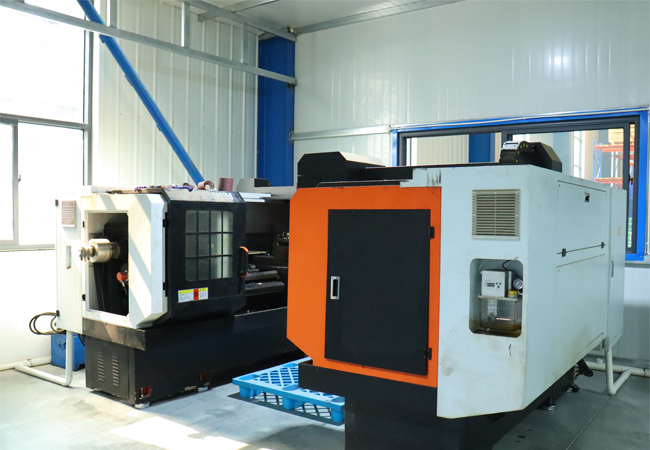Dic . 10, 2024 04:15 Back to list
Understanding the Importance of Oil Seals in Rotary Shaft Applications
Understanding Rotary Shaft Oil Seals Essential Components for Machinery Performance
Rotary shaft oil seals play a crucial role in the functionality and longevity of various mechanical systems. Commonly found in engines, gearboxes, and a multitude of other rotating machinery, these seals are designed to prevent the leakage of lubricants while simultaneously keeping contaminants at bay. This article delves into the importance, design, and application of rotary shaft oil seals, as well as tips for their maintenance.
What Are Rotary Shaft Oil Seals?
A rotary shaft oil seal, also known simply as an oil seal, is a device that seals the junction between a stationary and a moving component. Their primary function is to retain lubrication within the machinery while preventing dirt, dust, and other foreign materials from entering the system. Essentially, these seals play a protective role that enhances the overall performance and durability of mechanical components.
Importance in Machinery
In any machinery that involves rotating shafts, the presence of lubrication is essential for reducing friction, therefore preventing wear and tear. A compromised seal can lead to lubricant leakage, resulting in insufficient lubrication and escalating the risk of overheating and failure. The consequences of using damaged or poorly designed oil seals include costly repairs, unplanned downtime, and reduced operational efficiency. Hence, rotary shaft oil seals are integral to enhancing reliability and operational efficiency in mechanical systems.
Design and Functionality
Rotary shaft oil seals come in various designs, but the most common type is the lip seal. This seal consists of a flexible lip made from materials like elastomers (rubber-like materials) or PTFE (Teflon). The lip exerts pressure against the rotating shaft, creating a barrier that effectively retains oil while preventing contaminants from entering.
The design of an oil seal can vary significantly based on several factors, including
1. Shaft Diameter The seal must match the diameter of the rotating shaft to ensure a proper fit. 2. Material Composition The choice of materials depends on the operating environment, including temperature and exposure to chemicals. Common materials include nitrile rubber, fluorocarbon rubber, and silicone. 3. Pressure Conditions Seals are rated for different pressure ranges. It's essential to select a seal that can withstand the operational pressures it will encounter.
4. Speed of Rotation The rotational speed can affect the seal's performance. Oil seals are, therefore, engineered to function effectively at the speed of the rotating shaft.
rotary shaft oil seals

Applications Across Industries
Rotary shaft oil seals find applications across a wide spectrum of industries. In the automotive sector, they are critical for engine blocks, differential housings, and transmission systems. In manufacturing, they ensure the reliability of motors and pumps, while in the aerospace industry, they are pivotal in ensuring that critical components such as turbines operate smoothly. Additional applications can be found in the agricultural sector, HVAC systems, and a multitude of other mechanical assemblies where rotating parts are involved.
Maintenance and Replacement
Proper maintenance of rotary shaft oil seals is essential for sustaining machinery functionality. Regular inspections can help detect wear, cracks, or abrasions, allowing for proactive replacement before seal failure leads to larger issues.
1. Visual Inspections Frequent checks for leaks or noticeable wear can be beneficial.
2. Monitoring Lubricant Levels Maintaining proper lubrication levels is critical. If frequent refills are necessary, it may indicate a seal failure.
3. Replacement Guidelines Generally, oil seals should be replaced during regular maintenance intervals or when servicing adjacent components.
4. Clean Installation When replacing seals, ensuring cleanliness during installation is vital to avoid introducing contaminants that could compromise the new seal’s integrity.
Conclusion
In summary, rotary shaft oil seals are integral components in a wide array of mechanical applications, providing essential protection against oil leaks and contaminants. Understanding their design, functionality, and maintenance can significantly enhance machinery performance and lifespan. By ensuring the integrity of oil seals, businesses can achieve greater efficiency, reduce operational risks, and ultimately save on repair costs in the long run. Properly maintained rotary shaft oil seals are not just a necessity; they are an investment in the reliability of any mechanical system.
-
The Trans-formative Journey of Wheel Hub Oil Seals
NewsJun.06,2025
-
Graphene-Enhanced Oil Seals: Revolutionizing High-Pressure Oil Sealing
NewsJun.06,2025
-
Future of Hydraulic Sealing: Advanced Intelligent TCN Oil Seals
NewsJun.06,2025
-
Don’t Let a Broken TCV Oil Seal Ruin Your Day
NewsJun.06,2025
-
Bio-Inspired Dust Seals for Better Sealing Performance
NewsJun.06,2025
-
Biodegradable and Sustainable Hydraulic Seal Materials
NewsJun.06,2025
-
Top Oil Seal Solutions for Your Industrial Needs
NewsMay.22,2025
Products categories
















